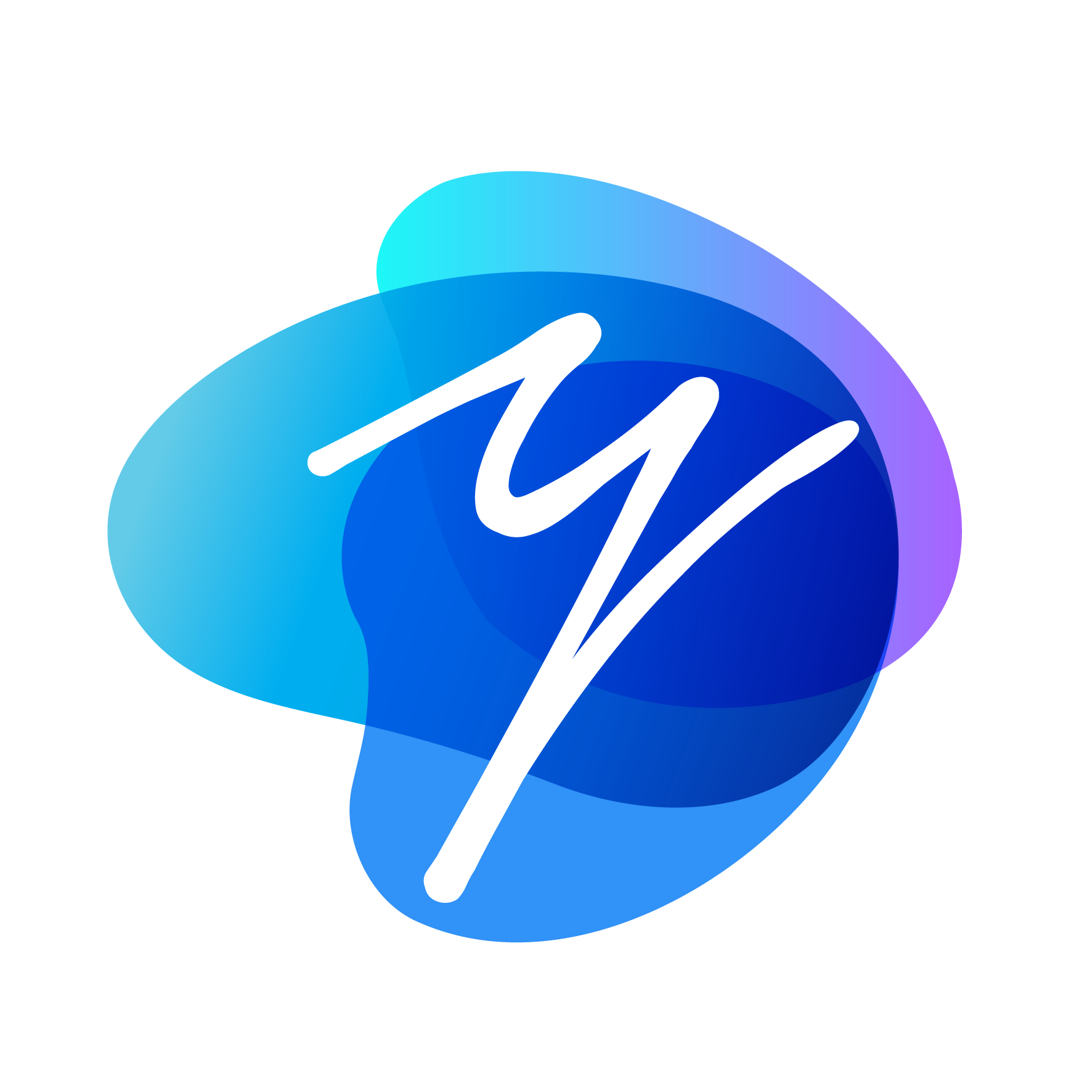Trip Planner App

Tartisans
- Branding
- User Research
- Product Ideation
- UX|UI Design

Designing the brand
After talking to the client and considering the target market, it was clear to me that we needed to create a very traditional, high-end brand aesthetic. We experimented with different shapes and lines for the logo symbol, but in the end we decided to go with a purely typographical logo design.
Introduction
The Tartisans is a mobile application for traveler to plan and organize their trip with friends. The challenge was to rethink how travellers searched for places and manage their trip and to document the design thinking process used.
I was part of the pitch team and responsible for the interaction design and UI design of the iOS app. At the very beginning we spent a week to get on boarding by background research that allowed us to define project milestones, review the competitor landscape, understand our client’s vision.
1. Empathise
Empathy is simply the ability to understand and share the feelings of others. It’s a huge part of user experience design as we’re designing for our users and we need to understand their needs, behaviours and pain-points.
In order to tackle this trip plaining problem, we composed and sent surveys to our potential users. We found out that the travellers could be roughly divided into 2 categories according to the travel habits: people who plan their trip by their own and people who rely on travel agencies to provide them travel packages.
Next we interviewed several travellers to find out how they currently searched for activities, planned and organise their trips and to get to know detailed information about their behavior, emotional desires, painpoints, and gain creators.
We also looked at competitors such as trip advisor, Expedia and TripIt to learn how travellers used these tools and what their pain points were. We gained a bunch of insights from these interviews and created an affinity diagram to discover common themes and patterns.
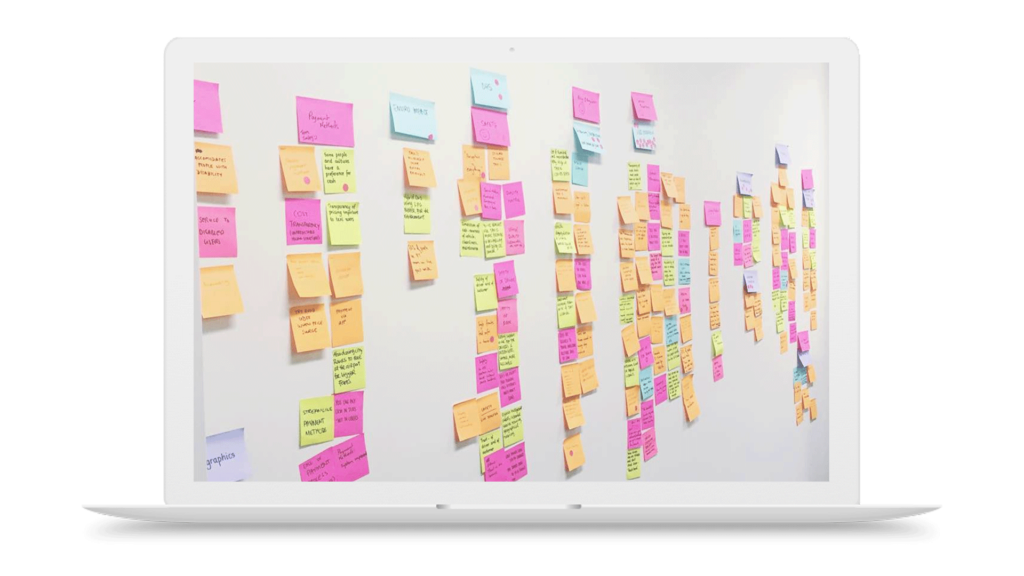
The common insights that arose were:
- People weren’t really sure where they wanted to go on their next holiday but they had a basic idea, e.g. ‘I want to go on a beach holiday during the next few months. I’d like to go Fiji for a week and I don’t know what we can do there.’
- Most people do their research on their mobile phones in their downtime on the train or bus to/from work.
- People’s travel choices were often influenced by where their friends went.
- People’s travel choices always decided by group of people who will go to the trip together (Families or friends).
- People found difficulties in make a trip plan, the current software is hard to use.
- People found rich image and video content to be very useful when making their travel decisions.
2. Define
This is where we process our findings from the empathy stage and construct a point of view based on the user’s needs. We define the problem we’re solving and who we’re solving it for. It’s also important to make sure that we have a way to measure the success or failure of our ideas.

From our research, we defined our primary persona: Samantha, 22 years old, from Adelaide. she is a keen traveler and enjoy travelling with friends. She would like pack as much into a trip as possible. Samantha struggles to group her activities together and make travel itinerary for group trip, because everyone has different ideas.
From our competitor research, we saw an opportunity to focus on travellers who would like to get inspire and make a travel plan with friends together. Our aim was to design a tool that helped these travellers Easily and quickly arrange activities and plan their next holiday.
3. Ideate
By this point we knew what the problem was and who we were designing for. It was now time for coming up with ideas to solve the problem. During our empathy phase, we learned that most travellers research holiday activities in their downtime on their mobiles, so we decided to design an app.
One of the easiest and most effective ways of brainstorming ideas is through concept mapping and making paper prototype. We started by sketching as many different ideas as we could think of, some of which can be seen above. Once we had a bunch of them, we discussed them with the potential users in more detail and pulled out the key ideas.
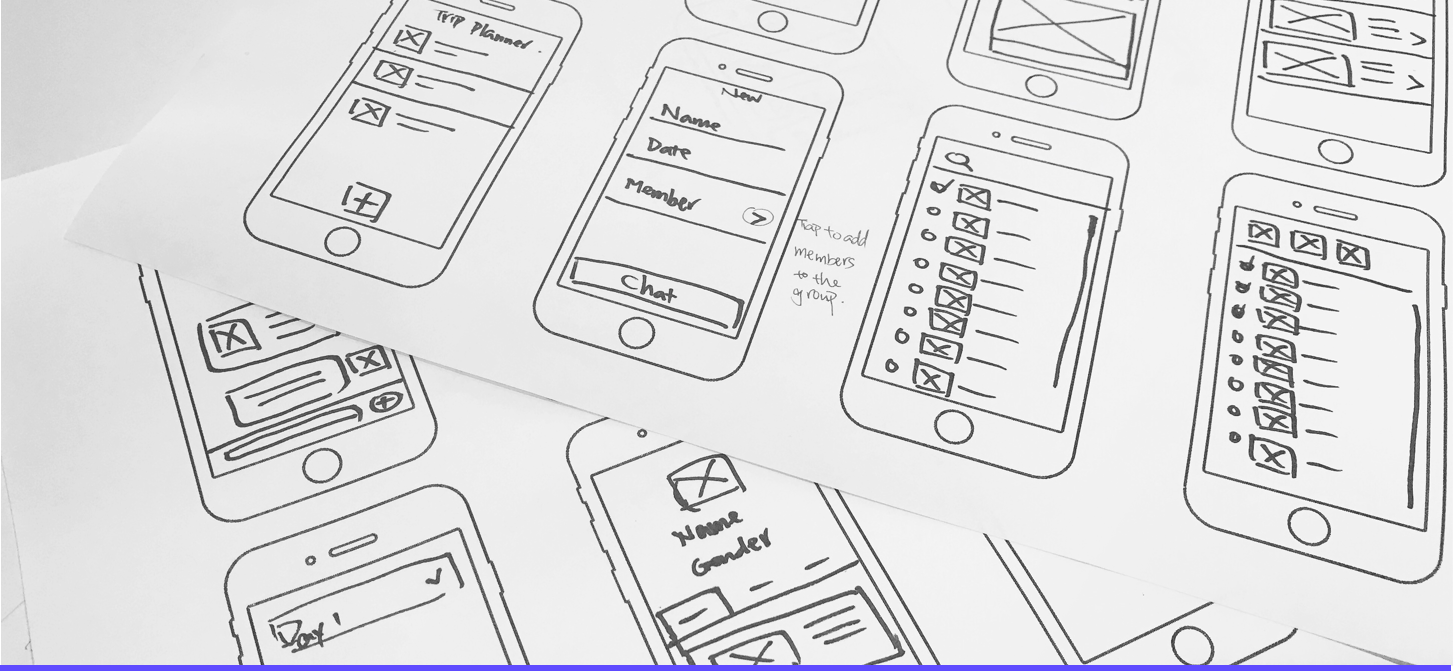
4. Prototype
After user interviews, the idea that we most excited about was the ‘explore and discover activity’ and ‘plan trip with friends’.
This basically allows travellers, who don’t yet know what to do on their trip, explore and save a range of activity based on their interests and where they would like to travel. Also allows travellers to share saved activities to their travel group and let other people rate them, then add the top-rated activities into their trip plan.
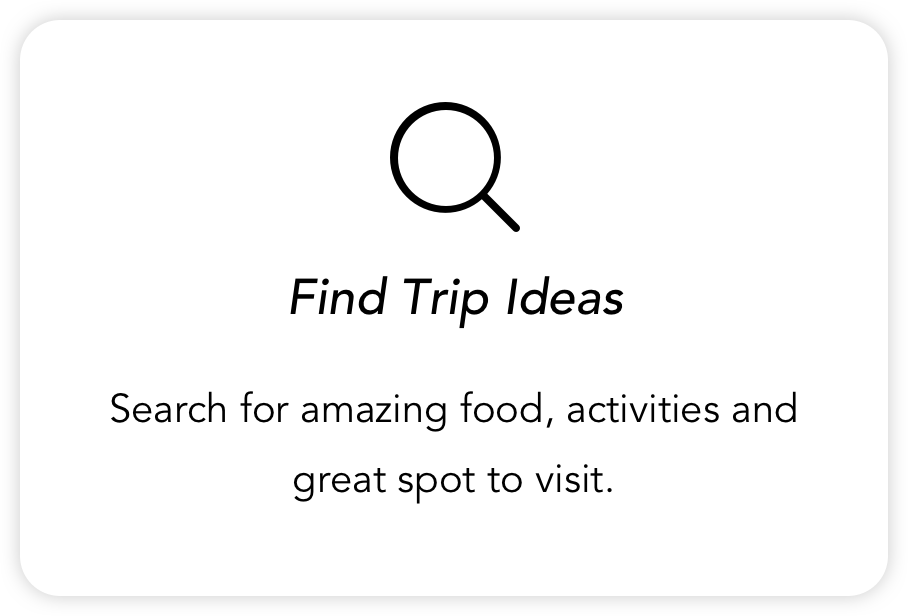
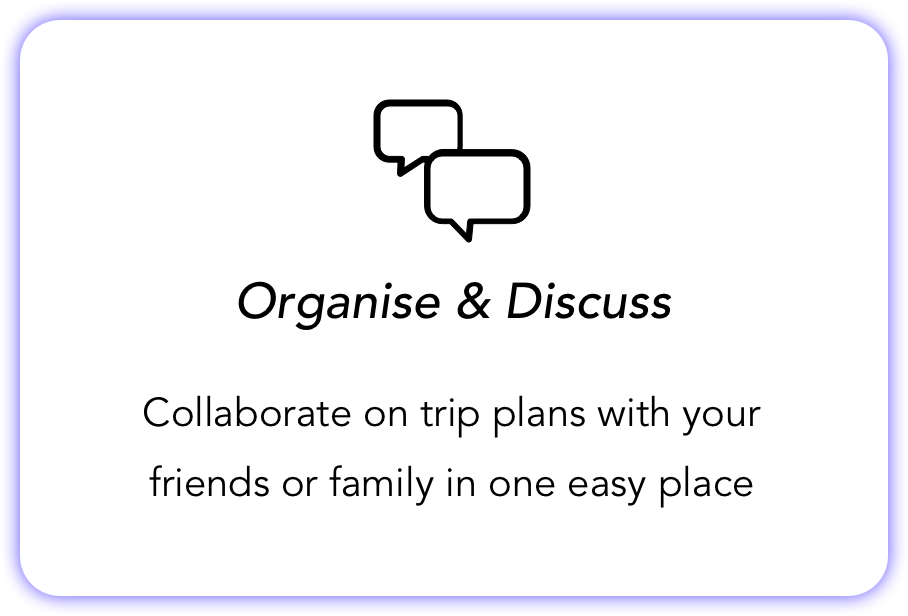
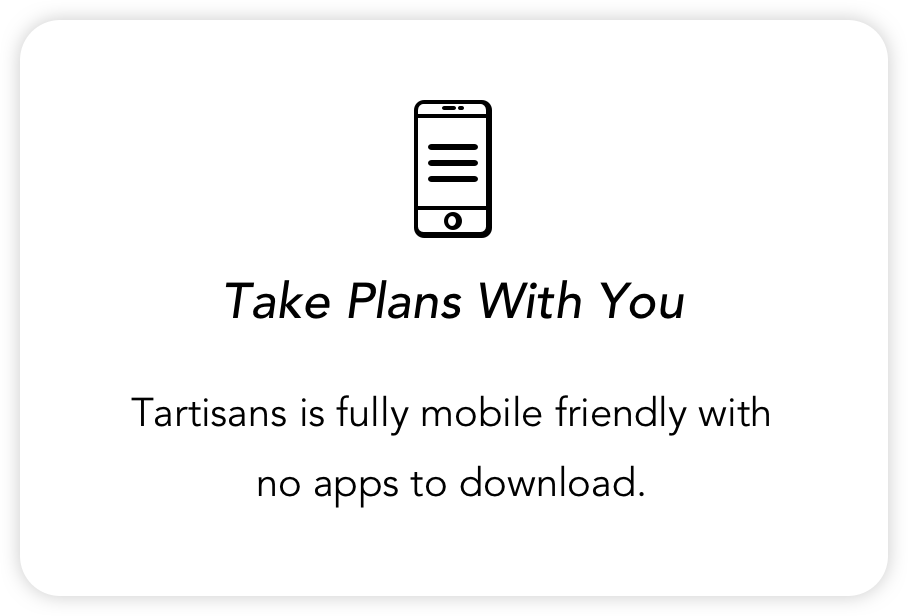
We built on this idea further and sketched out more detailed wireframes of the app which we used to create our prototype below. To save time, we designed the prototype in Sketch App.
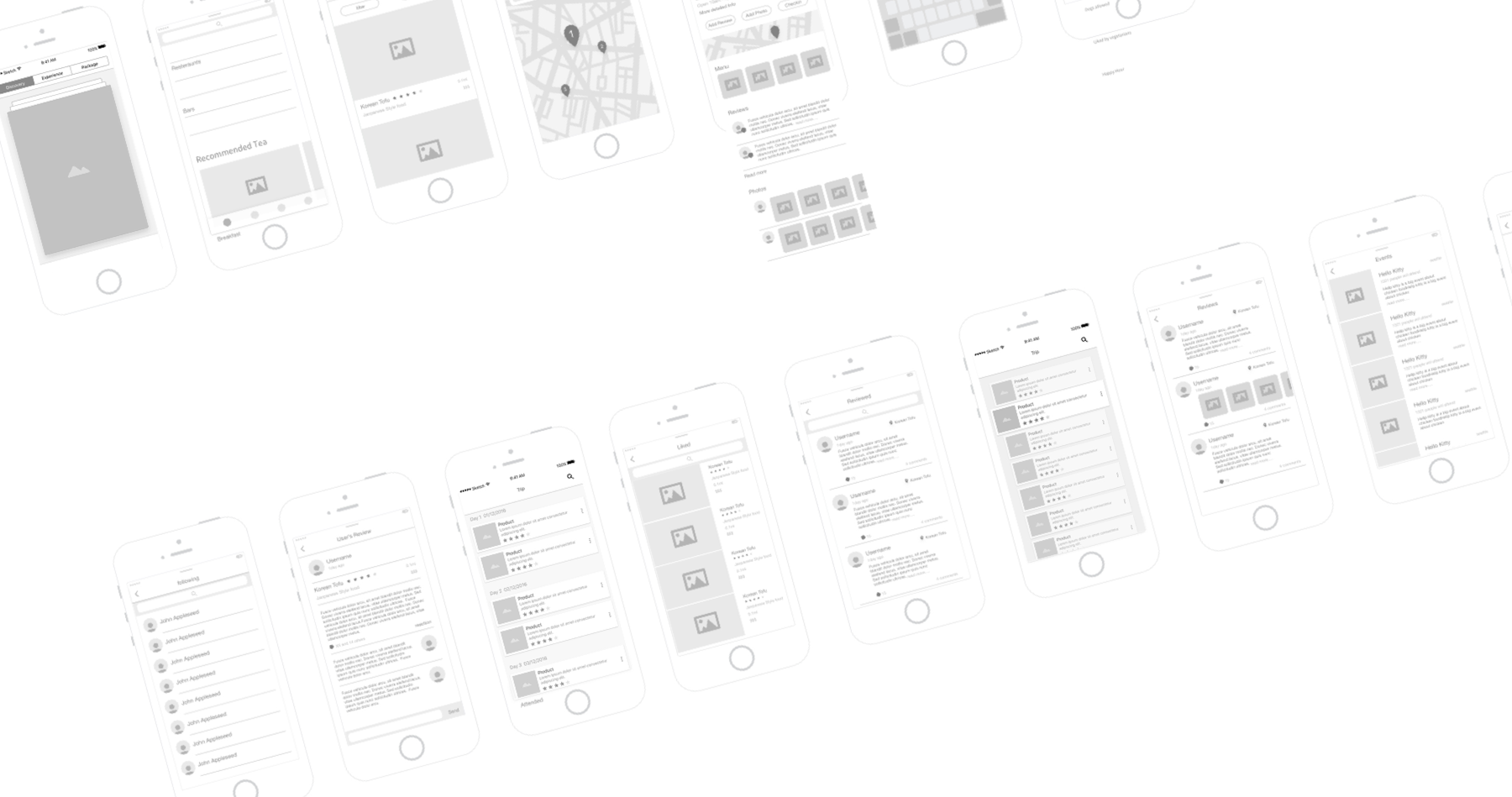
User Flow
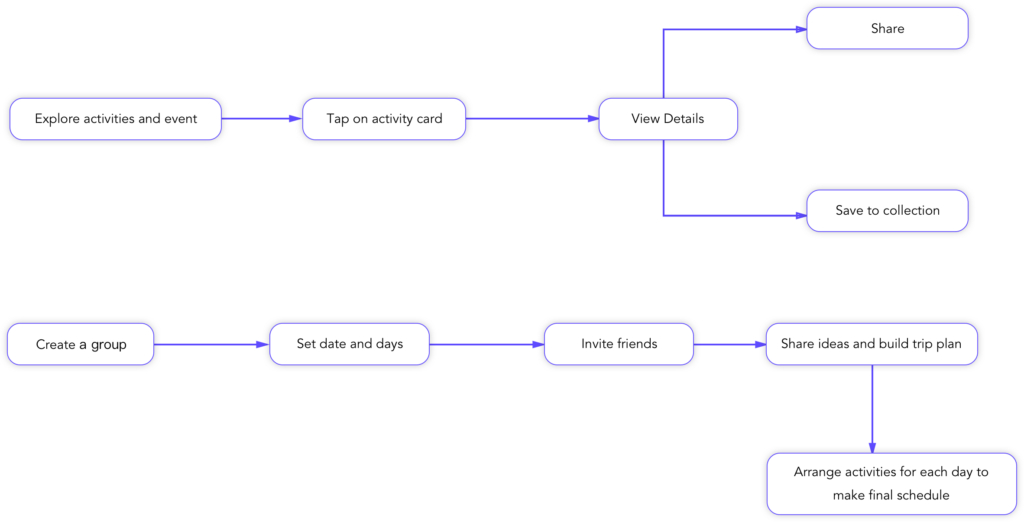
iOS Interface
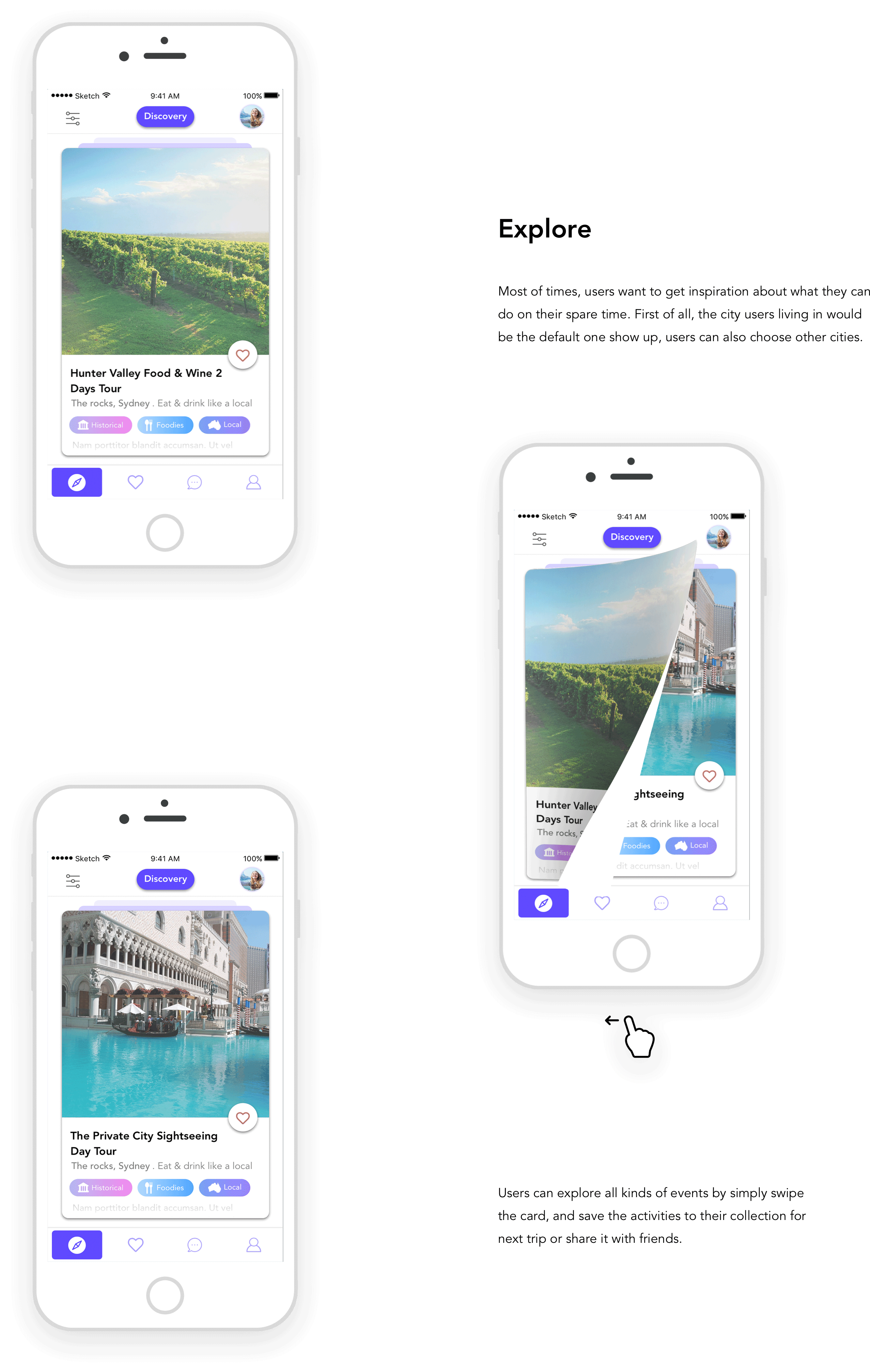
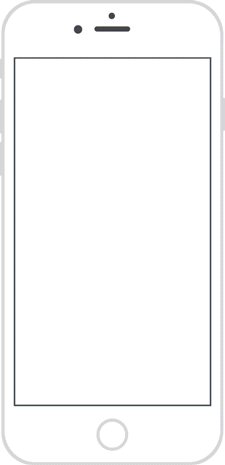
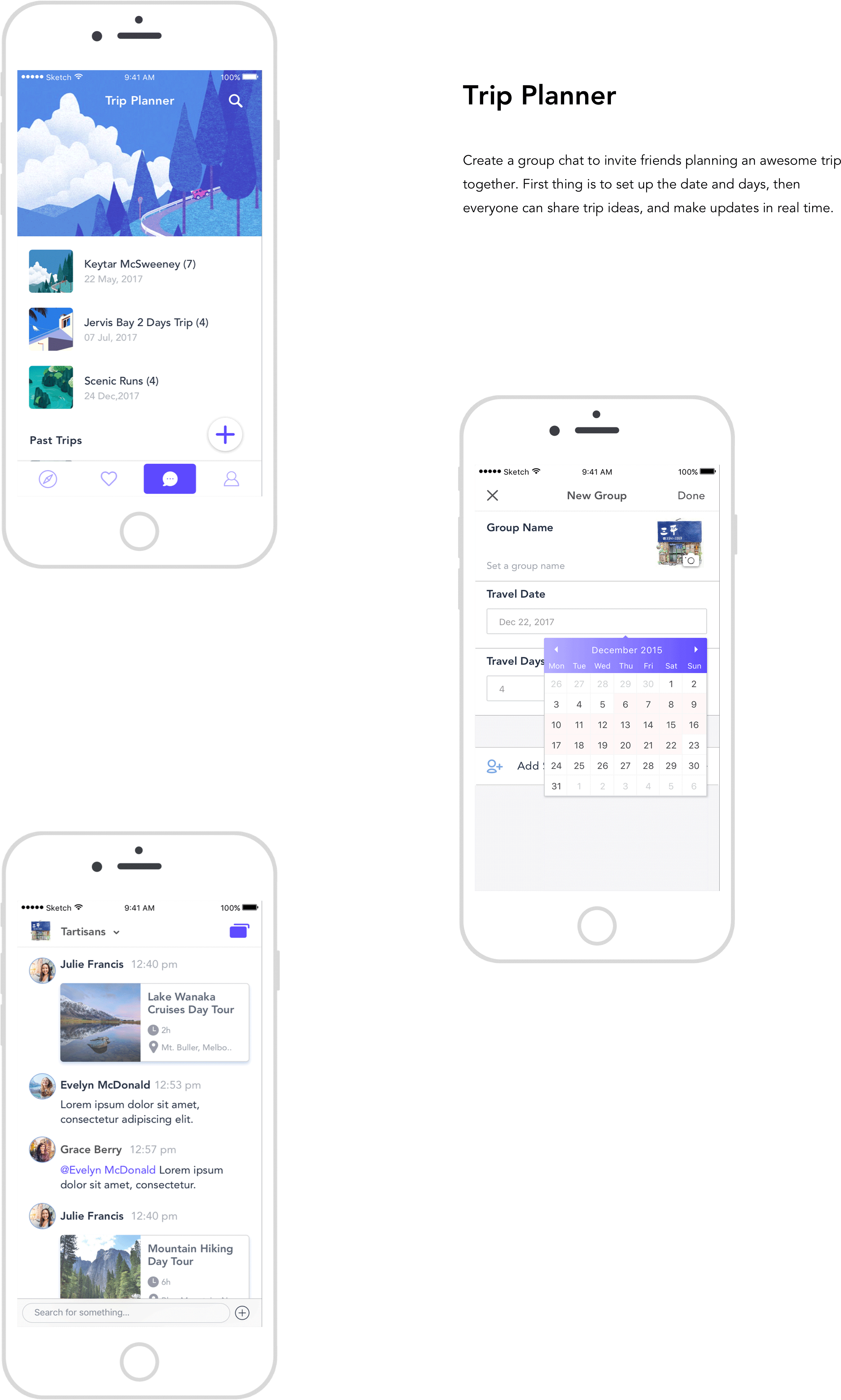
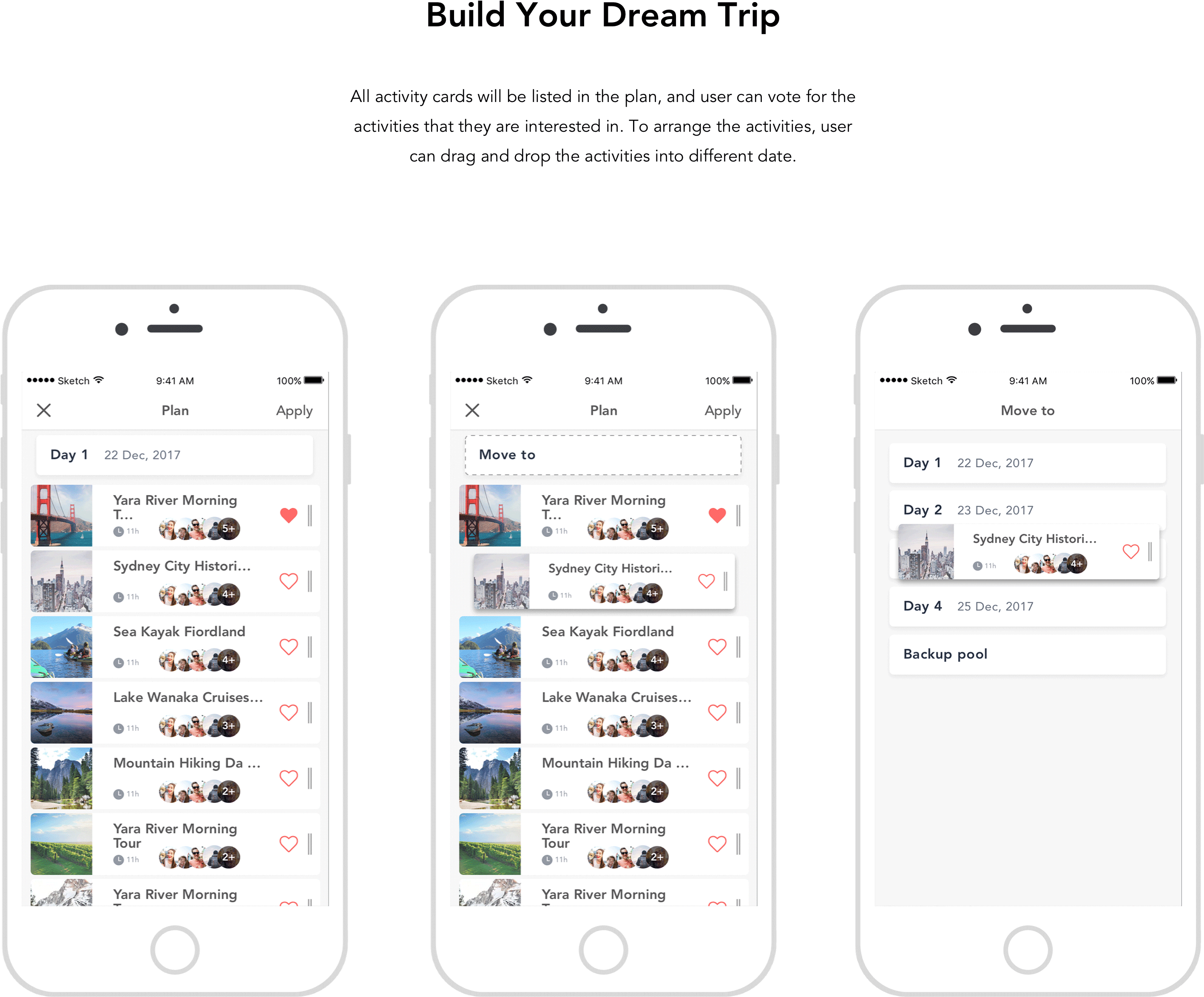
5. Test
Testing is the part where we validate whether our design concept works or not. We use Invision to build an interactive and tested it on 10 people. We put together a test scenario, similar to the example scenario mentioned above, and observed people as they share saved activity from their collection to group then arrange the selected activity to different days. We found that people liked being able to see where their friends had travelled and also found the content-rich activity guides helpful.
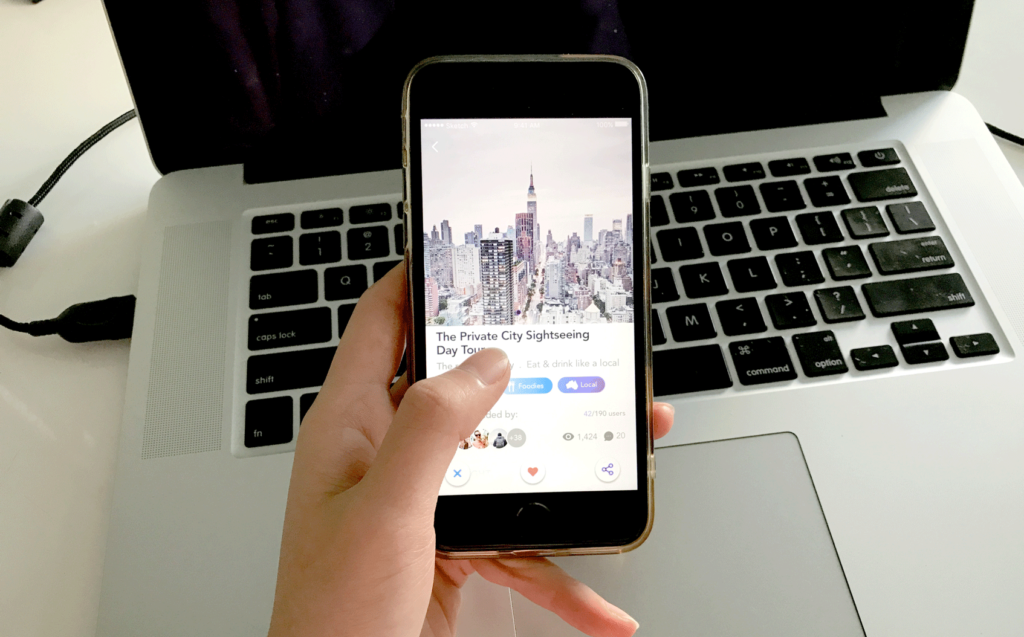
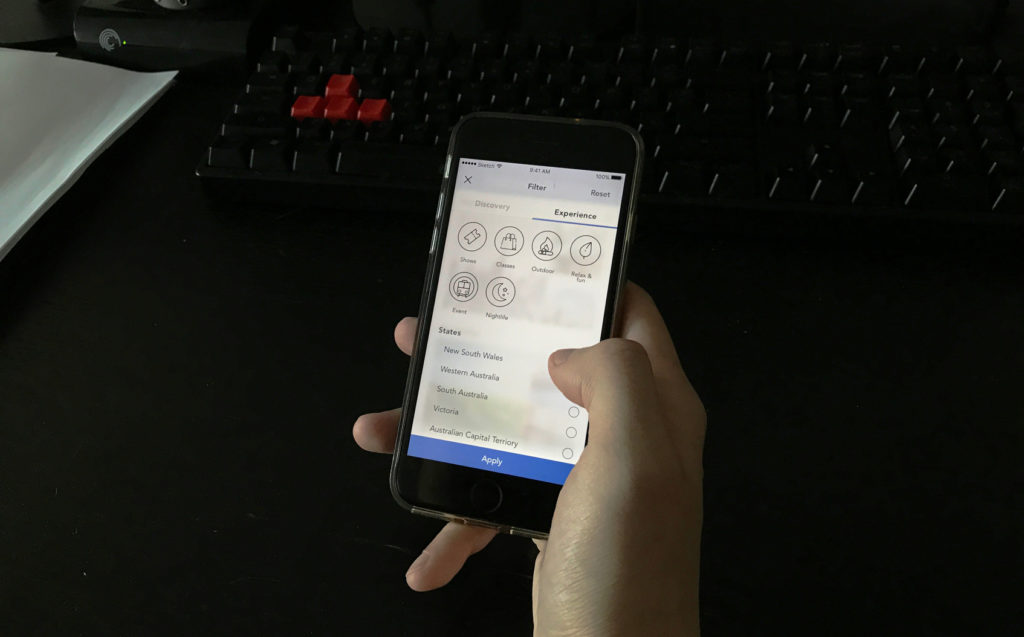
6. Continue Design, Continue Testing
As we had got positive feedbacks for the product concept, we decided to move forward, providing more value to users. The idea was for those who wants to find trip mate, they can find people based on their interest and travel habits. Also we need to collect more information about users travel behaviour, social sharing habits.
